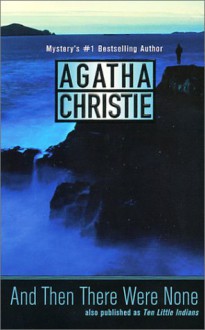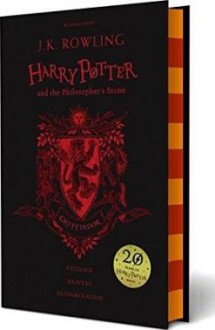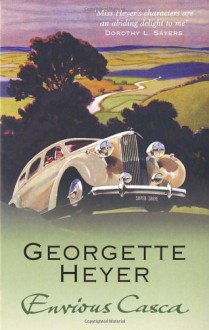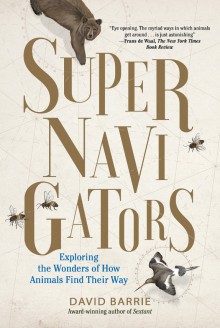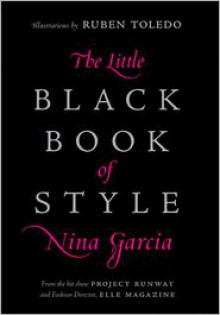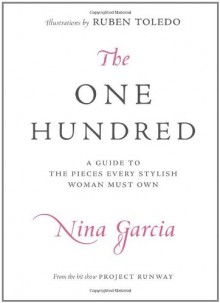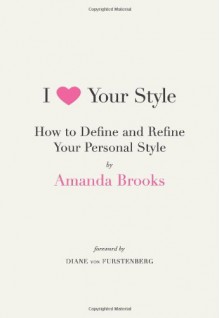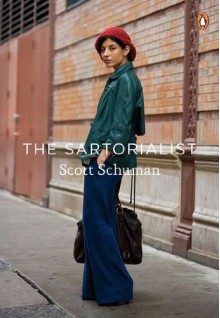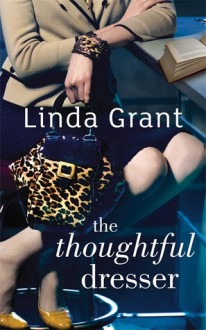Aaah -- the "different title" trap, how I hate it. There is precisely one example of a title change that resonates with me (Agatha Christie's And Then There Were None, which was originally published as Ten Little Niggers and, alternatively, Ten Little Indians), but with this one exception, I can't think of a single title change that actually serves my interests as a reader.
I think the one change that still most infuriates me for the sheer ignorance and bigotry of its motivation is the change of the title of J.K. Rowling's first Harry Potter novel from Harry Potter and the Sorcerer's Stone to Harry Potter and the Philosopher's Stone.
But I'd come to detest the practice long before that, as Golden Age mystery novelists such as Agatha Christie, Ngaio Marsh and Patricia Wentworth, whose books account for a particularly large share of my reading material, frequently had to suffer the indignity of the publisher missing with the titles that they themselves had given to their books, based on the notion that the original title would presumably be incomprehensible to readers outside Great Britain. The list of their title changes includes:
Agatha Christie:
(Note: Christie had a hand in some of these title changes (mostly with short stories; in many cases, especially with the "spoilery" or plain nonsensical new titles of her novels, however, she didn't.)
* Lord Edgeware Dies -- A/K/A: Thirteen for Dinner
* Three-Act Tragedy -- A/K/A: Murder in Three Acts
* Murder on the Orient Express -- A/K/A: Murder on the Calais Coach
* Death in the Clouds -- A/K/A: Death in the Air
* The ABC Murders -- A/K/A: The Alphabet Murders
* Dumb Witness -- A/K/A: Poirot Loses a Client; Murder at Littlegreen House; The Mystery at Littlegreen House
* Hercule Poirot’s Christmas -- A/K/A: Murder for Christmas; A Holiday for Murder
* One, Two, Buckle My Shoe -- A/K/A: The Patriotic Murders; An Overdose of Death
* Five Little Pigs -- A/K/A: Murder in Retrospect
* The Hollow -- A/K/A: Murder After Hours
* Taken at the Flood -- A/K/A: There is a Tide
* Mrs. McGinty’s Dead -- A/K/A: Blood Will Tell
* After the Funeral -- A/K/A: Funerals Are Fatal
* Hickory, Dickory, Dock -- A/K/A: Hickory, Dickory, Death
* Murder in the Mews (collection) -- A/K/A: Dead Man’s Mirror
* Murder in the Mews (short story) -- A/K/A: Good Night for a Murder
* Dead Man’s Mirror (short story) -- A/K/A: Hercule Poirot and the Broken Mirror; expansion of the nonseries short story The Second Gong
* Four and Twenty Blackbirds (short story) -- A/K/A: Poirot and the Regular Customer
* The Triangle at Rhodes (short story) -- A/K/A: Before It’s Too Late and Double Alibi
* The Adventure of the Christmas Pudding (short story) -- expansion of the story The Theft of the Royal Ruby, A/K/A: The Christmas Adventure
* The Adventure of Johnny Waverly (short story) -- A/K/A: At the Stroke of Twelve
* Double Sin (short story) -- A/K/A: By Road or Rail
* Problem at Sea (short story) -- A/K/A: Poirot and the Crime in Cabin 66; The Quickness of the Hand
* The Dream (short story) -- A/K/A: The Three Strange Points
* The Mystery of the Baghdad Chest (short story) -- expanded into The Mystery of the Spanish Chest
* They Do It with Mirrors -- A/K/A: Murder with Mirrors
* 4:50 from Paddington -- A/K/A: What Mrs. McGillicuddy Saw! and Murder, She Said
* The Mirror Crack’d from Side to Side -- A/K/A: The Mirror Crack’d
* The Thirteen Problems (collection) -- A/K/A: The Tuesday Club Murders
* Sanctuary (short story) -- A/K/A: The Man on the Chancel Steps
* Murder Is Easy -- A/K/A: Easy to Kill
* Towards Zero -- A/K/A: Come and Be Hanged
* Sparkling Cyanide -- A/K/A: Remembered Death
* Yellow Iris (short story) -- A/K/A: Hercule Poirot and the Sixth Chair
* Mr. Parker Pyne, Detective (collection) -- A/K/A: Parker Pyne Investigates
* The Love Detectives (short story) -- A/K/A: At the Crossroads
* Why Didn’t They Ask Evans -- A/K/A: The Boomerang Clue
* And Then There Were None -- A/K/A: Ten Little Niggers; Ten Little Indians
* Destination Unknown -- A/K/A: So Many Steps to Death
* The Mousetrap (play) -- originally written as a radio play called Three Blind Mice; based on the short story / novella also called Three Blind Mice
* While the Lights Last and Other Stories (collection) -- The Harlequin Tea Set and Other Stories
* The Actress (short story) -- A/K/A: A Trap for the Unwary
* Wireless (short story) -- A/K/A: Where There’s a Will
* The Listerdale Mystery (short story) -- A/K/A: The Benevolent Butler
* The Manhood of Edward Robinson (short story) -- A/K/A: The Day of His Dreams
* Mr. Eastwood’s Adventure (short story) -- A/K/A: The Mystery of the Spanish Shawl; The Mystery of the Second Cucumber

Ngaio Marsh:
* Surfeit of Lampreys -- A/K/A: Death of a Peer
* Swing Brother Swing -- A/K/A: A Wreath for Rivera
* Opening Night -- A/K/A: Night at the Vulcan
* Spinsters in Jeopardy -- abridged in the U.S. as The Bride of Death
* Off With His Head -- A/K/A: Death of a Fool
* Death at the Dolphin -- A/K/A: Killer Dolphin
Patricia Wentworth:
* Danger Point -- A/K/A: In the Balance
* Miss Silver Intervenes -- A/K/A: Miss Silver Deals with Death
* The Traveller Returns -- A/K/A: She Came Back
* Pilgrim's Rest -- A/K/A: Dark Threat
* Spotlight -- A/K/A: Wicked Uncle
* The Brading Collection -- A/K/A: Mr Brading's Collection
* Anna, Where Are You? -- A/K/A: Death At Deep End
* The Gazebo -- A/K/A: The Summerhouse
* Who Pays the Piper? -- A/K/A: Account Rendered
* Little More Than Kin -- A/K/A: More Than Kin
* Seven Green Stones -- A/K/A: Outrageous Fortune
* Devil-in-the-Dark -- A/K/A: Touch And Go
* Unlawful Occasions -- A/K/A: Weekend with Death
More recently, Golden Age mysteries have been republished with altered titles in an obvious bid to fit them into the holiday sales bracket:
* George Heyer's Envious Casca has been rechristened A Christmas Party; and
* Gladys Mitchell's Dead Men's Morris and The Groaning Spinney are being republished as Death Comes at Christmas and Murder in the Snow, respectively.
Other recent examples -- where the altered title, moreover, doesn't even make sense based on the contents of the book -- are, courtesy of the reminder in Mike Finn's post for this task, Philip Pullman's first His Dark Materials novel, Northern Lights (published as The Golden Compass outside the UK), and C.J. Tudor's The Taking of Annie Thorne (published as The Hiding Place otuside the UK).
It's not just fiction, either, though. Just looking at the Flat Book Society's selections for this present year, the last two selections have both been published under different titles:
* David Barrie's Supernavigators: Exploring the Wonders of How Animals Find Their Way was originally called Incredible Journeys: Exploring the Wonders of Animal Navigation; and
* Bob Berman's Earth-Shattering: Violent Supernovas, Galactic Explosions, Biological Mayhem, Nuclear Meltdowns, and Other Hazards to Life in Our Universe can also be found under the title Boom!: The Violent Supernovas, Galactic Explosions, and Earthly Mayhem that Shook our Universe.
And don't even get me started on translations ... I guess it's a good thing that Alexandre Dumas's best-known novels, The Three Musketeers and The Count of Monte Cristo are only known under a single title in English, because enough of his other books (which arguably could use that sort of consistency even more) aren't. Just consider:
* Marie Stuart: Mary Stuart; Mary Queen of Scots
* Le chevalier d'Harmental: The Chevalier d'Harmental; The Chateau d'Harmental; The Conspirators
* Ascanio: Francis I; The Sculptor's Apprentice
* Sylvandire: Beau Tancrède; The Marriage Verdict
* Fernande: Fernande, The Story of a Courtesan; The Fallen Angel
* La Reine Margot: Margaret de Navarre; Marguerite de Valois
* La guerre des femmes: The War of Women; Woman's War; Nanon
* Le chevalier de Maison-Rouge: The Knight of Redcastle; The Chevalier de Maison-Rouge
* La dame de Monsoreau: Diana of Meridor; Chicot the Jester; La Dame de Monsoreau; Diane
* Le bâtard de Mauléon: Agenor de Mauléon; The Half Brothers; The Head and the Hand; The Iron Hand
Les deux Diane: The Two Dianas; The Taking of Calais; The Chatelet; The Comte de Montgomery
* Mémoires d'un médecin, Joseph Balsamo: Memoirs of a Physician; Andrée de Tavarney; The Chevalier; Joseph Balsamo; Madame du Barry; The Countess Dubarry; The Elixir of Life; Cagliostro
* Ange Pitou: Taking the Bastille; Six Years Later; The Royal Life-Guard; Ange Pitou
* Le page du duc de Savoie: The Page of the Duke of Savoy; The Duke's Page; Leone-Leona; Saint Quentin; The Tourney of the Rue Saint Antoine
* Les mohicans de Paris I: The Monsieur Jackal; The Carbonari; The Horrors of Paris, or, the Flower of the Faubourg; The Mohicans of Paris; The Suicides; Monsieur Sarranti; Princess Regina
* Les mohicans de Paris II, Salvator le commissionnaire:Salvator; Conrad de Valgeneuse; Rose-de-Noël; The Chief of Police; Madame de Rozan
* Les compagnons de Jéhu: The Company of Jéhu; The Aide-de-Camp of Napoleon
* Le capitaine Richard: The Twin Captains; The Twin Lieutenants
* Les louves de Machecoul: She-Wolves of Machecoul; The Last Vendée
* La maison de glace: The Russian Gipsy; The Palace of Ice
* La San-Felice et Emma Lyonna: The Lovely Lady Hamilton; The Beauty and the Glory; Love and Liberty; The Neapolitan Lovers
* Les blancs et les bleus: The Whites and the Blues; The First Republic; The Polish Spy; The Prussians on the Rhine; The 13th Vendémaire; The 18th Fructidor
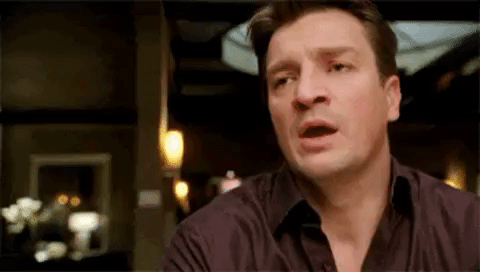
Two of my favorite German classics are suffering a similar fate:
* The title of Theodor Storm's Der Schimmelreiter is translated as anything from The Rider on the White Horse to The Dykemaster (neither of which captures the spooky subtext of the German title: The Rider on the White Horse is a literal translation of the words but not their meaning in this particular context; The Dykemaster is a rendition of the main character's job -- which I actually prefer, as the sinister connotations giving rise to the German title's subtext arise from that job); and
* Lion Feuchtwanger's Die Jüdin von Toledo can be found in English (to the extent it can be found at all) as either Raquel, The Jewess of Toledo, A Spanish Ballad ... or a combination of all of the above.
I guess by comparison we can be glad that Miss Smilla only lost her form of address and the instinctive "feeling" was transmogrified into the more physical "sense" when Peter Høeg's Miss Smilla's Feeling for Snow (the UK title of Frøken Smillas fornemmelse for sne) became Smilla's Sense of Snow in the American publisher's bid to match the alliteration contained in the original Danish title -- again at the expense of forsaking the original title's subtext, which is all about instinctive and subconscious, not about sensory and possibly even conscious responses.
(Task: St. Nicholas is a man of many names in English alone – Santa Claus, Saint Nick, Father Christmas … although in the English speaking world he only comes once (at Christmas, not also on December 6 – whereas in Germany and the Netherlands he makes his visits under different names on both occasions).
Which of your favorite books were published under different titles in the same language, e.g., in North America vs. Britain? Have you ever bought a book under a title unfamiliar to you, only to discover belatedly that it was one you already own / had already read under a different title?)


 Log in with Facebook
Log in with Facebook 
